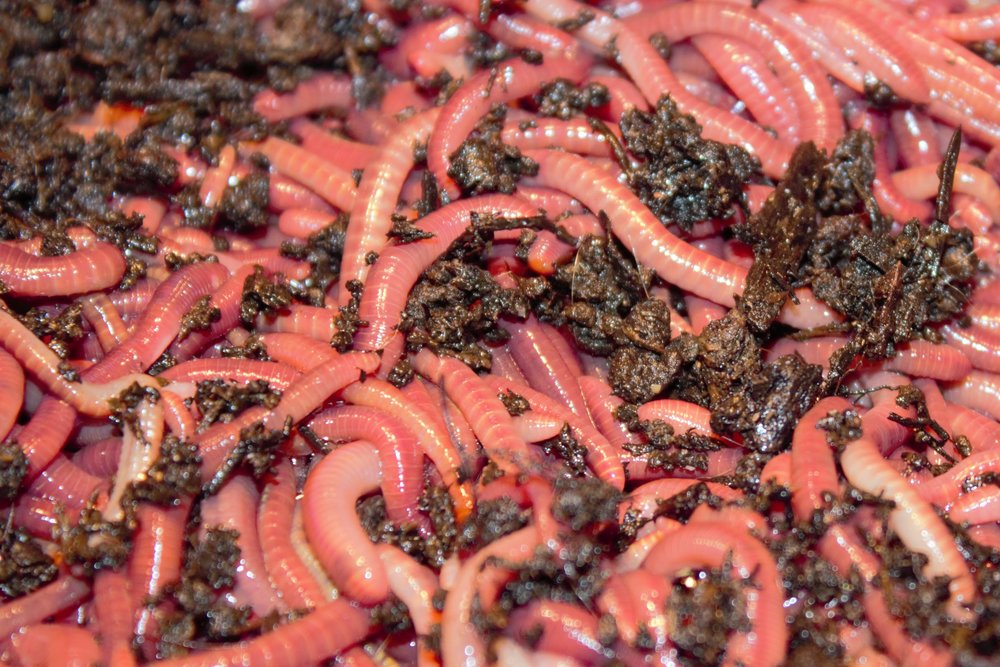Trusted red worms: For organic farming
Trusted red worms: For organic farming
Blog Article
Get the Many Out of Your Garden Compost With Red Wigglers
The combination of red wigglers right into your composting system can dramatically boost the performance and performance of waste monitoring techniques. These worms are not just proficient at breaking down organic products however likewise add to the development of high-quality compost that improves dirt wellness. Recognizing their optimum treatment demands and the benefits of vermicomposting is vital for making the most of results (red wigglers). However, the procedure of establishing up and preserving a worm bin may offer obstacles that call for cautious consideration. Exploring the details of this approach might reveal remedies to typical composting issues encountered by lots of gardeners.
Comprehending Red Wigglers
Understanding red wigglers is necessary for anybody curious about vermicomposting, as these worms play a critical duty in breaking down natural matter. Clinically referred to as Eisenia fetida, red wigglers are differentiated by their reddish-brown shade and slender bodies, normally measuring between 3 to 4 inches in size. Unlike earthworms, which thrive in dirt, red wigglers favor a damp, organic-rich setting, making them perfect for composting systems.
These worms are renowned for their starved cravings, consuming half their body weight in organic product daily. This ability enables them to quickly decay cooking area scraps, lawn waste, and other eco-friendly materials, transforming them into nutrient-rich garden compost. Red wigglers thrive in temperature levels varying from 55 ° F to 77 ° F, requiring mindful surveillance of their setting to make sure optimum task.
Furthermore, red wigglers replicate promptly, increasing their population approximately every 3 to 4 weeks under optimal problems. This quick recreation is crucial for maintaining an efficient composting operation. red wigglers. Comprehending their biology and habits is crucial for any person aiming to harness their possibility in lasting waste management practices
Advantages of Vermicomposting
Vermicomposting deals numerous benefits that expand past straightforward waste decrease. This cutting-edge approach leverages the all-natural decay capabilities of red wigglers to transform organic waste into nutrient-rich compost, enhancing dirt wellness and fertility. The resulting vermicompost is bristling with valuable microbes, which can boost dirt structure and increase nutrient schedule for plants.

In addition, vermicomposting can be exercised in various settings, making it available for metropolitan residents and those with restricted exterior area. It requires very little financial investment and can be conveniently handled inside your home or outdoors, making it suitable for various lifestyles.
The use of vermicompost additionally advertises much healthier plant growth by enhancing microbial activity, boosting water retention, and giving essential nutrients. Gardeners and farmers who include vermicompost into their practices usually observe raised crop yields, making vermicomposting a lasting choice for both waste monitoring and farming productivity.
Establishing Your Worm Container
Developing an effective worm bin is crucial for effective vermicomposting, and with just a couple of key parts, anybody can develop a reliable system. Begin with a suitable container; a plastic or wood bin with a cover works well. Preferably, the bin needs to be between 10 to 18 inches deep to give adequate room for the worms to flourish.
Ensure appropriate air flow by drilling tiny holes in the sides and cover, enabling air flow while retaining wetness. Keep a balance in between wetness and drain; the bin should be damp yet not soaked. A layer of bedding, such as shredded paper or cardboard, provides a habitat for the worms and help in dampness retention.
Take into consideration the area of your worm container (red wigglers). By complying with these guidelines, you will develop a helpful setting for red wigglers, laying the groundwork for a successful vermicomposting endeavor.
Feeding Your Red Wigglers

Prevent feeding them meat, milk, and oily foods, as these can draw in parasites and produce undesirable odors. In addition, it is essential to cut or shred larger products to facilitate quicker decay, guaranteeing your worms can access the nutrients much more successfully.
Moderation is crucial; overfeeding can lead to anaerobic conditions, damaging the worms and reducing the composting process. red wigglers near me Display the container for leftover food and change your feeding regimen accordingly. A basic regulation is to offer regarding half an extra pound of food per pound of worms weekly.
Last but not least, maintaining wetness is essential. Objective for a wet, yet not soggy, atmosphere, as wetness help in the breakdown of food and supports worm activity. By very carefully handling their diet, you can enhance the effectiveness of your red wigglers in changing natural waste right into rich compost.
(red wigglers near me)
Harvesting and Making Use Of Compost
After several weeks of thorough composting, you will certainly discover that the abundant, dark material produced by your red wigglers is prepared for harvest. One reliable method is to use a light source; red wigglers are delicate to light and will certainly burrow deeper into the product, permitting you to scoop out the top layer of compost.
When collected, the garden compost can be used in various applications. Mix it into yard dirt to improve structure and fertility, or utilize it as a leading clothing for potted plants. It can additionally be diluted in water to develop a nutrient-rich fluid plant food, frequently called "worm tea." This tea can be applied straight to plants, supplying them with an increase of essential nutrients.
Remember to save any unused garden compost in a cool, dry place to maintain its top quality. By effectively harvesting and utilizing the compost produced by red wigglers, you not just improve your yard however likewise promote sustainable gardening practices.
Verdict
Incorporating red wigglers right into composting practices dramatically improves the efficiency of natural waste change. Ultimately, the assimilation of red wigglers in composting contributes to lasting gardening, lowers garbage dump waste, and advertises environmental stewardship via efficient source recycling.
Report this page